감각이상 아카이브 페이지
컨텍스트_
한국은 세계에서 두 번째로 원폭 피해자가 많은 나라이다.
이제 아흔 살 가까이 된 1세대 원폭 피해자 백여 명이 생활하고 있는 ‘합천원폭피해자복지회관’ 옆에는 자료관이 있다. 그곳에서도 출입이 제한된 수장고에는 5,001명의 원폭 피해자 신상 자료 원본이 보관되어 있다. 어쩌면 또 다른 문제의 불씨가 될 수 있는 그 대량의 낡은 자료들을 처음으로 마주한 2018년 초봄, 나는 한 인간으로서 설명할 수 없는 깊은 무기력감을 경험했다. 1945년 원자폭탄 투하 당시 히로시마엔 약 10만여 명의 한국인이 거주했다. 지금까지 피폭사로 잠정 집계된 한국인만 4만 9천 명이 넘는다. 그들은 대부분 징용되었거나 돈을 더 벌 요량에 히로시마로 떠난 이웃 사람들이었다. 당시 징용은 지역별로 이루어졌는데 히로시마로 온 한국 사람들의 80%정도가 경남지역, 특히 ‘합천’ 에서 왔다. 전쟁이 종결된 후 살아남은 한국인들 중 천여 명을 제외한 약 만 천여 명 정도가 귀향을 시도했다. 그리고 그들-피폭자들은 자연스레 자신들의 고향으로 돌아왔다.
작업을 하면서 가장 경계했던 점은 원폭 피해자에 대한 선입견을 갖는 것이었지만 현장에서 목격한 원폭 2세들의 장애나 갑작스러운 질병 발생률은 이해하기 어려울 정도로 높았다. 〈감각이상〉에 등장하는 다운증후군의 여성은 처음으로 자신의 사진 촬영을 허락한 원폭 피해자 2세였다. 그녀와의 작업을 통해 작품에서 유지해오던 관점이 ‘개인과 증명’ 에서 ‘가족과 변화’로 뚜렷이 옮겨가게 되었고, 그들을 살피고 앞으로의 삶을 보듬는 일이 필요하다고 생각했다. 현재 합천의 또 다른 이름은 ‘제 2의 히로시마’ 다. 그리고 그곳에는 여전히 불안과 축복을 기저로 한 아이들이 매년 태어나고 있다.
‘외할머니는 살아생전 단 한 번도 히로시마로 여행을 가지 않았다. 가족들은 아무것도 묻지 않았다. 그러나 엄마와 나의 기억 속에는 종종 부엌에서 창 밖을 바라보며 일본 노래를 흥얼거리던 그녀가 있다.’
CONTEXT_
South Korea has the second largest number of nuclear bomb victims in the world.
The ‘Hapcheon Welfare Center for Atomic Bomb Victims,’ still houses about one hundred first generation nuclear bomb victims nearing their 90s. Next to it you will find an archive with a restricted storage area, which stores the original documents with personal information of all 5,001 nuclear bomb victims. In the early spring of 2018, I was overrun with a sense of helplessness looking at these stored and neglected documents, while also realizing that they could ignite new conflicts. In 1945 when the atomic bomb was dropped on Hiroshima, there were about 100,000 Koreans residing in the area. As of today, tentative calculations estimate that over 49,000 Koreans died from nuclear radiation exposure. Most of the victims were from the same or neighboring villages and were forced into labor or sought ways to make some money in Hiroshima. At the time, conscription was done per region, so 80% of Koreans who came to Hiroshima were from the Gyungnam province, specifically from ‘Hapcheon.’ When the war ended, save for around 1,000 Koreans, the rest of the surviving population of around 11,000 Koreans sought their way home. The atomic bomb victims also made their way home.
While working on this project, I was careful to avoid any prejudice against the victims of the atomic bomb. I met with victims in person and was astonished to find out just how much even the second-generation victims had a large number of disabilities and sudden illnesses. The woman with Down’s syndrome featured in the “Abnormal Sense” was the first second-generation atomic bomb victim who allowed her picture to be taken. Working with her, my perspective shifted from the ‘individual and verification’ to ‘family and change.’ I also came to recognize that these people needed to be taken care of in the future. Hapcheon’s second name is ‘second Hiroshima’, and every year children are born, underlain with anxiety and blessing.
‘My maternal grandmother never traveled to Hiroshima again in her lifetime. Our family did not ask any questions. However, there is my grandmother, in my mother’s and my memory, occasionally looking out the kitchen window, humming Japanese tunes.’
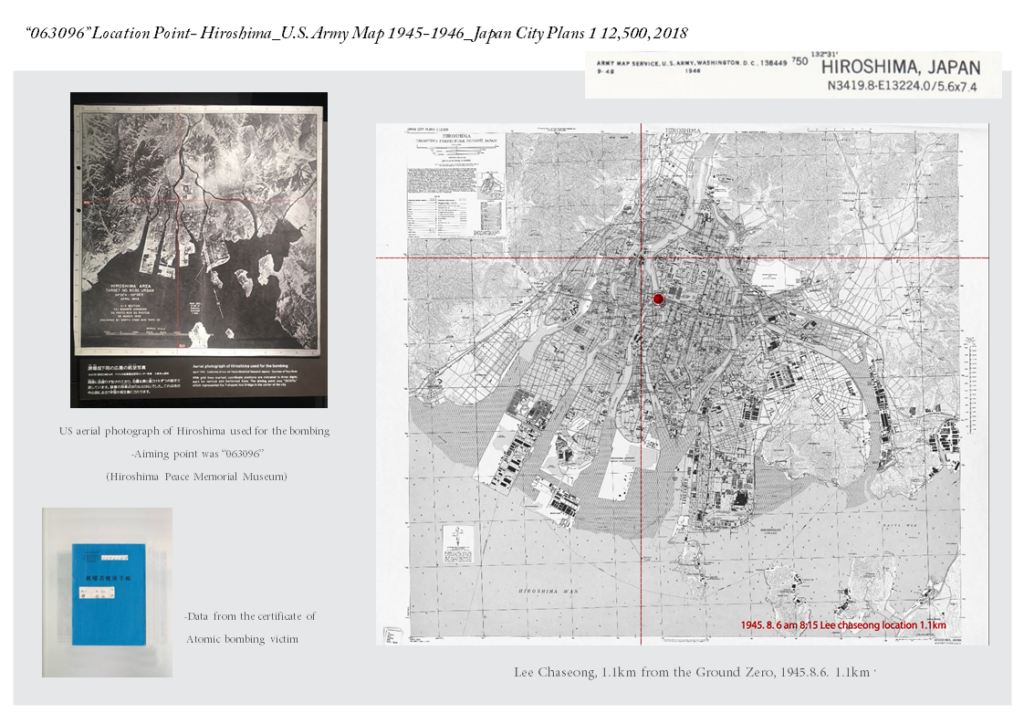
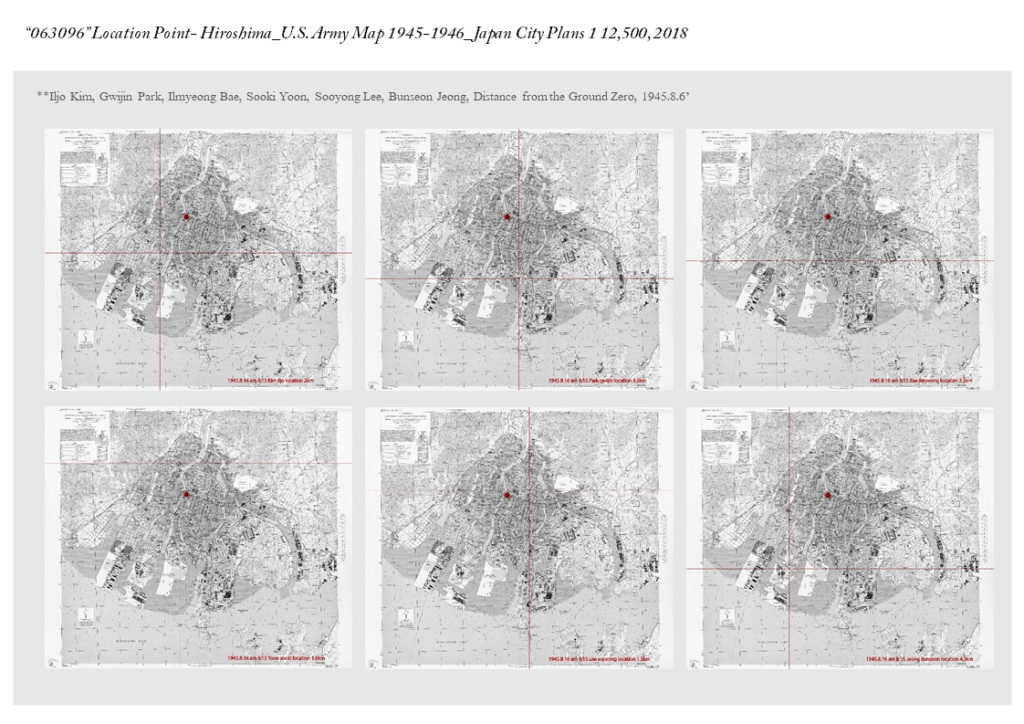
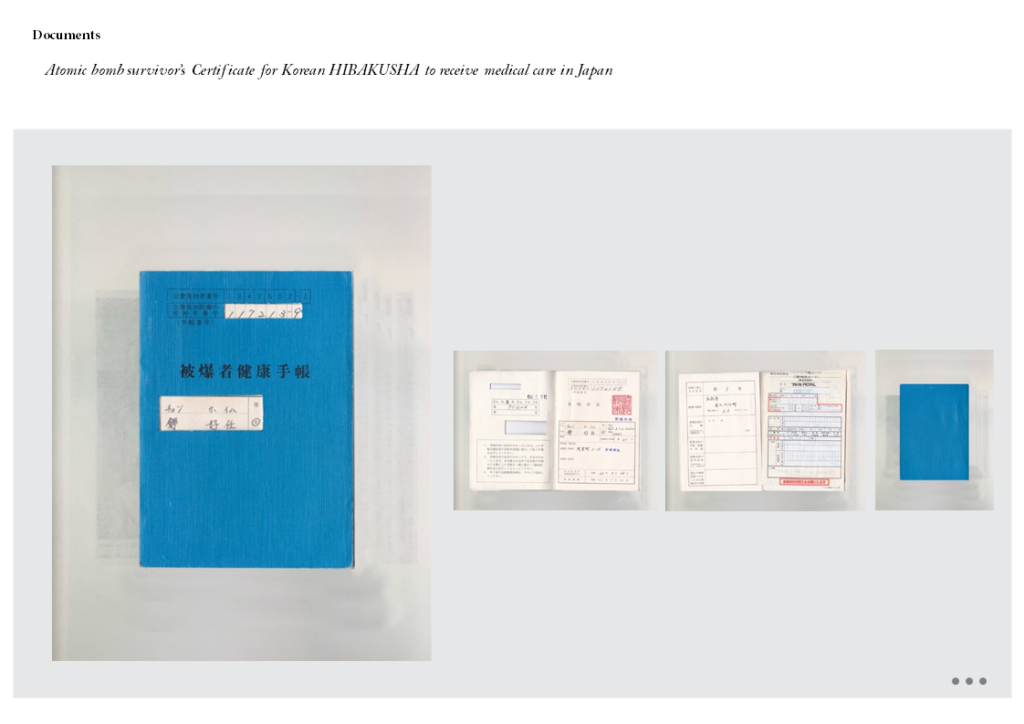
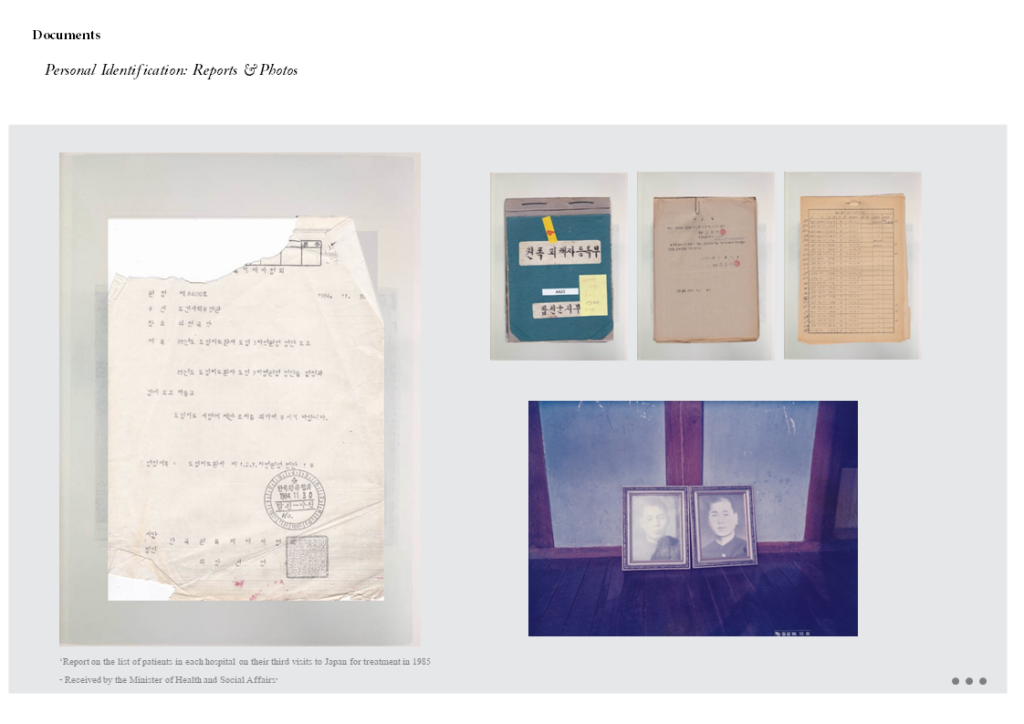

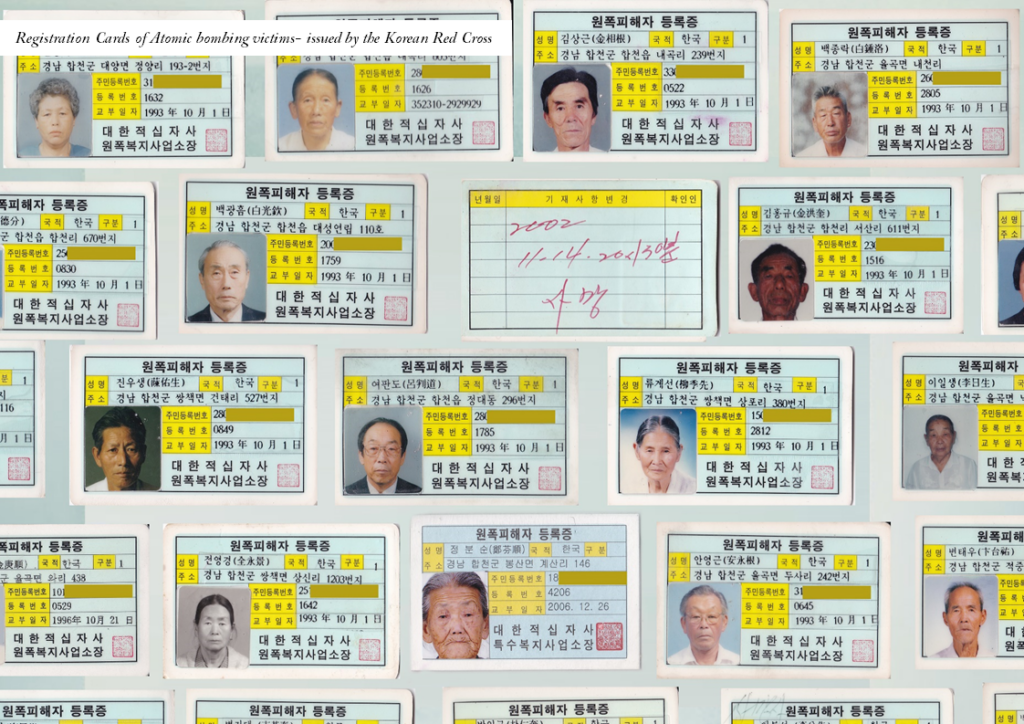
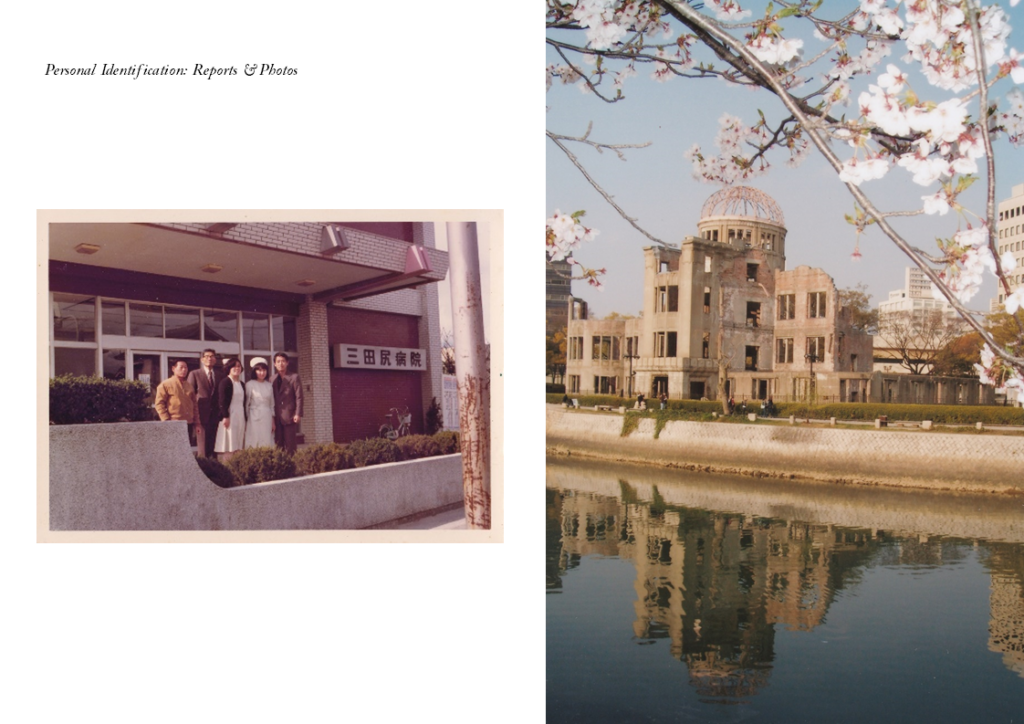
Archives List
―“063096” Location Point- Hiroshima_U.S. Army Map,1945-1946_Japan City Plans 1 12,500, 2018
―Atomic bomb survivor’s Certificate for Korean HIBAKUSHA to receive medical care in Japan
―Registration Cards of Atomic bombing victims issued by the Korean Red Cross
―Personal Identification: Reports & Photos
Media Appearance & Event link
―2022 [KBS] Brave People, Artist Hyoyeon Kim, Korea(ko)
―2021 [KBS] Culture Sketch-Documentary, Hyoyeon Kim, Korea(ko)
―2021 [KNN SBS] Morning-Wide News ‘Artist Hyoyeon Kim’, Korea(ko)
―2021 [NHK] Tokyo, Hiroshima<Abnormal sense : Hyoyeon Kim> Special Coverage News Ⅰ, Japan(ja)
―2019 [Mainichi News], ‘Photograph Korean atomic bomb survivors in Japan’, Japan
―2022 《The Printed World》 Seoul Museum of Art, Buk-Seoul Museum of Art, Seoul, Korea(ko)
―2021 Hyoyeon Kim ‘ABNORMAL SENSE’ Multidisciplinary Approach, Art Project Forum, Korea(ko)
―2020 GoEun+KT&G SKOPF ‘Photographer of the year’, GoEun Museum of Photography, Korea(ko)
아토믹 제너레이션, Atomic Generation
아토믹 제너레이션은 1945년 한국 일제 식민지배하에 강제징용과 이주로 일본 히로시마라는 타국에 체류하는 도중, 미국에 의해 발생된 원폭 투하 사건 이후 태어난 원폭피해자 자녀들을 표현하기 위해 작가가 Atomic + Generation 을 새로이 조합한 단어이다. 사건을 직접 겪지 않았음에도 복잡한 외교적 이해관계와 정신적, 신체적으로 특수한 상황에 놓여있는 이들을 표현하고자 했다. 또한 최근에 일어나고 있는 방사능 오염수 해양 방출을 비롯한 후쿠시마 원자로 폭발이나 체르노빌 사건에도 용어의 개념을 확장시켜 다각도에서 재고찰해 볼 수 있겠다.
‘Atomic Generation,’ is an expression I coined to throw light on the children of the Korean atomic bomb victims—who had been conscripted by the Japanese under its colonial rule and were forcefully relocated abroad to Hiroshima, Japan, when the US dropped the atomic bomb—who were born after the atomic bombings. Through this terminology, I sought to capture the exceptional circumstance of these future generations due to the complex geo-political interests surrounding them and their mental/physical conditions, despite not having experienced the incident firsthand. Furthermore, the concept of the ‘Atomic Generation’ term can be expanded to reexamine from various angles, including recent incidents such as the release of radioactive contaminated water into the ocean, the Fukushima reactor explosion, and the Chernobyl disaster.
Abnormal Sense_Archive material book 『”063096″ Location Note』
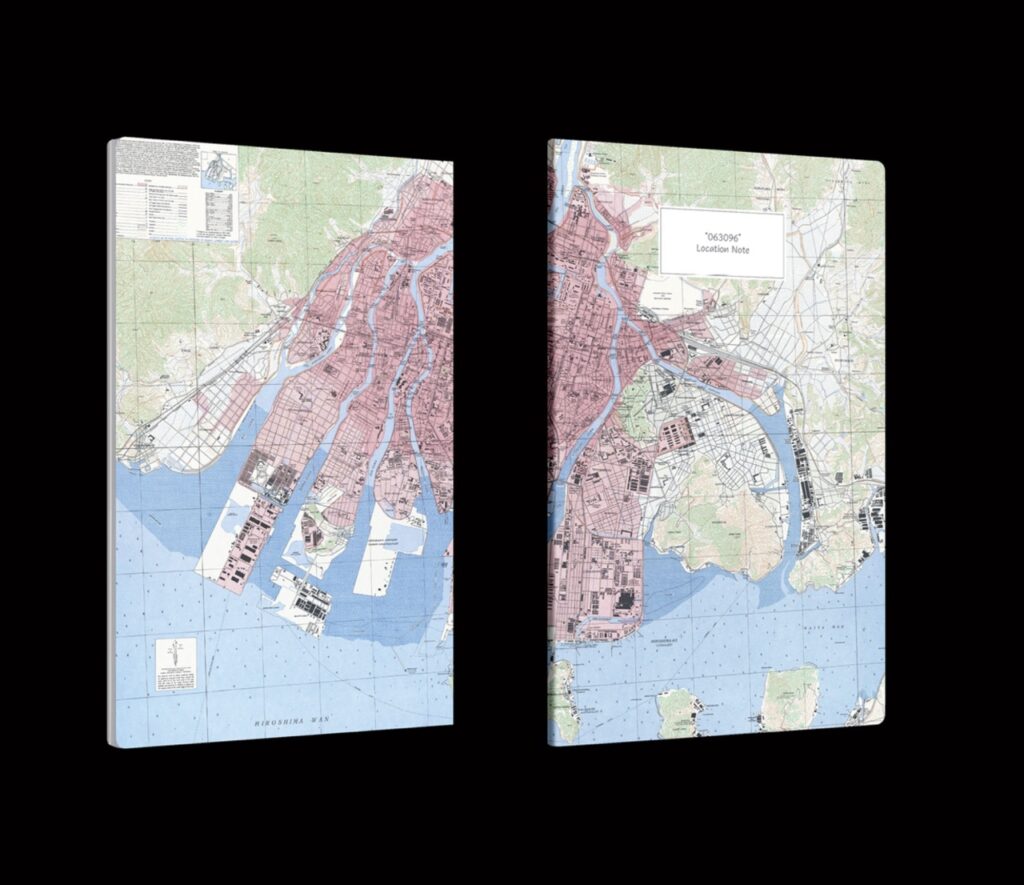

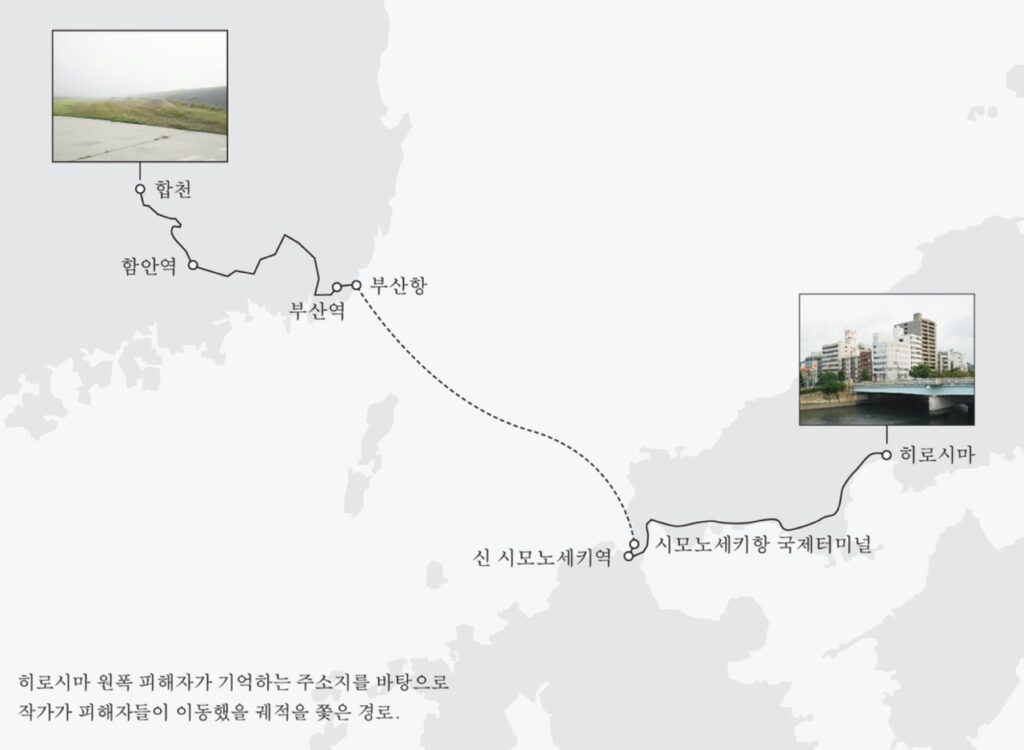

Leave a comment